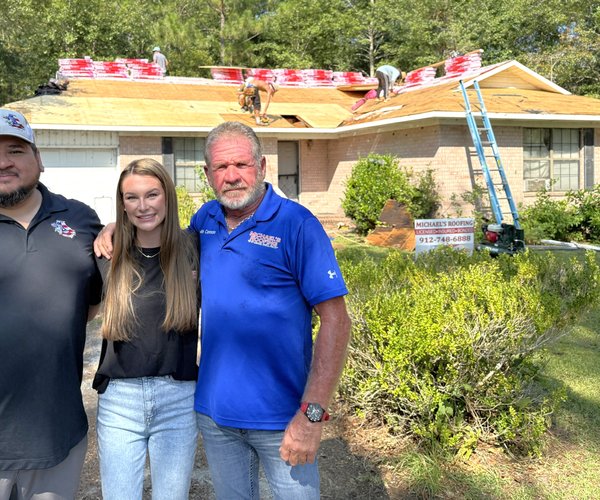SPRINGFIELD — The cure for one of Effingham County’s most enduring transportation problems will be found in a laboratory.
Core samples are currently being taken from 11 ash roads as part of a $7 million Full Depth Restoration (FDR) project. FDR is a process in which the ash is blended with the existing dirt and asphalt/aggregate surface, if one is present, and an asphalt emulsion.
The FDR process will enable the county to save countless millions of dollars by recycling current materials instead of having to haul them away and start from scratch. The top 6-9 inches of each road will be ground up, mixed thoroughly and reapplied with an asphalt emulsion.
“Our current work is engineering field testing and design,” Assistant County Manager Eric Larson said Thursday at Corinth Church Road site. “We are core sampling the existing road to determine the amount of ash, sand and moisture content in the roadbed so that the engineers can create the right design, or recipe, of asphalt emulsion to add to the dirt.
“This provides the highest level of confidence that our construction will stabilize the road and minimize failure in the future.”
In the 1990s and early 2000s, the county added boiler ash to some of its dirt roads. The ash was a free alternative to buying sand to add back to them as they eroded over time.
Unfortunately, the mix of ash and sand proved to be troublesome and incohesive.
“The boiler ash is really the problematic portion of it,” Larson said. “It’s such a fine material and it is very susceptible to moisture. When it gets wet, it just turns the whole road into soup.”
The impact of moisture was evident during the core sampling process on Corinth Church Road. A small amount of water enabled the drill to cut through the top layer easily.
“It just doesn’t have a lot of strength,” Larson said. “You have rutting and extensive potholing because the road just doesn’t hold up. “
When workers from Whitaker Lab & Engineering pulled the core out of the ground on Corinth Church Road, the top layer slid off the dirt beneath it.
“You get a lot of movement,” Larson said. “Water gets under the chip seal and the road just falls apart.”
The FDR project, funded by the 2020 Transportation Special Purpose Local Option Sales Tax (TSPLOST), consists of 17 miles of ash roads. Workers are taking 10 core samples per mile.
Each sample will be analyzed to determine the proper percentages of each ingredient to make a road that won’t be as susceptible to moisture.
“We have taken some deep cores, too, just to make sure that the deeper substrate is fine,” said Rip Graham, the project manager from Roberts Civil Engineering LLC. “We picked the worst spot in each road to do a deep core. Actually, they have been pretty good.
“There have been some real surprises there.”
The mix designs can vary considerably for each road.
“If we cut the road and there is only three inches of ash and a couple of inches of chip seal on it, that design will be a lot different if there is six inches of ash,” Larson said.
In 2019, county officials conducted a pilot FDR study on a one-mile portion of Indigo Road just north of Springfield.
“It has performed very well over the last year so the Board of Commissioners wanted to expand the use of FDR,” Larson said.
Larson said repaving of the ash roads in the current FDR project will likely start next spring. The bidding process will start in early 2022, he added.
Roberts Civil Engineering will be retained during construction. It will help put together the design and bid package.
“To get the best value for the county, you want to go uninterrupted once you start all the way through the roads,” Graham said. “The problem is, if we start too early, the cold will catch us. You have to stay inside an optimal temperature range and rather than take chance during the winter it is wiser to wait until at least March.
“I think 54 degrees is the optimum and the likelihood what we will have that day after day after day for an eight-hour working day isn’t going to happen until March.”








